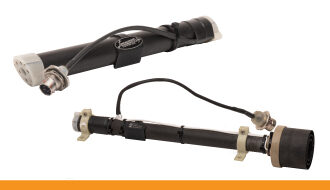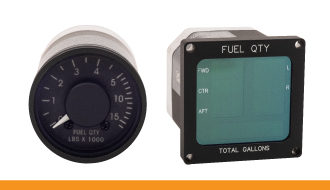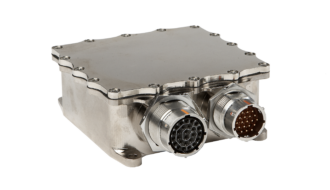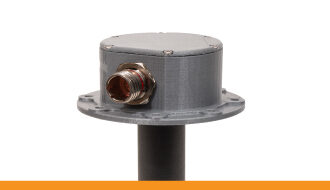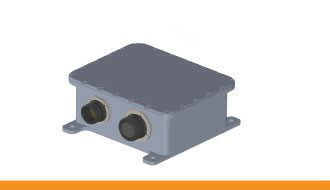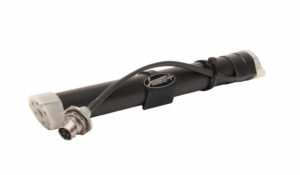Carbon Composite Fuel Quantity Probes
Overview
Liquid Measurement System (LMS) capacitance AC and DC fuel gauging probes use lightweight and durable carbon composite materials. In addition to being some of the lightest fuel probes in the industry, they are also virtually immune to corrosion, cracking, dents, and extreme field conditions. Our capacitance probes are inherently crash resistance by collapsing onto itself during hard impact landings to avoid tank penetration and fuel leaks. All electrical connections on the probe are bonded, and there is no friction or riveted electrical connections.
Features
- No support equipment required (when coupled with LMS signal conditioners)
- Robust composite two-tube design
- Will not dent, scratch, or absorb hand oils
- No friction or cracking under high vibration or slosh loads
- Weight savings in comparison to steel or aluminum probes
- Resistant to cracking or material fatigue
- No friction or riveted electrical connections
- Flange mounted or internal bracket mount
Features: AC Specific
- No electrical components on probe
- Polymer end-caps
- Optional fuel temperature sensing
- Optional point sensor capability (High/Low Level)
Features: DC Specific
- Compatible with 200v/m EMI environment
- Outer-tube grounded to the airframe providing Faradaycage shield
- Standard fuel temperature sensing
- Low cabling complexity
- Nickel plated end-caps
Input/Output
- Lo-Z Excitation and Hi-Z Response
- Ground (DC Probes)
Operational Temp. Range
- -55° C to +75° C
System Accuracy
- MIL-G-26988C Class II (±2% indication, ±0.75% full scale)
- No Compensator Required for One Fuel Type
- Compensator Required for Multiple Fuel Type
- MIL-G-26988C Class I (±4% indication, ±2% full scale)
- No Compensator Required for Multiple Fuel Types
Compensator (Optional)
- Direct measurement of fuel dielectric properties for improved accuracy across multiple fuel types

Gallery
| Section and Description | Category | |
|---|---|---|
| 1 | Temperature & Altitude | B2 |
| 2 | Temperature Variation | B |
| 3 | Humidity | A |
| 4 | Operational Shocks and Crash Safety | B |
| 5 | Vibration | S (Curve T) R (Curve G) |
| 6 | Explosive Atmosphere | E |
| 7 | Waterproofness | W |
| 8 | Fluids Susceptibility | F |
| 9 | Sand and Dust | S |
| 10 | Fungus Resistance | F |
| 11 | Salt Fog | S |
| 12 | Magnetic Effect | Y |
| 13 | Power Input | ZXX |
| 14 | Voltage Spike | A |
| 15 | Audio Frequency Conducted Susceptibility | Z |
| 16 | Induced Signal Susceptibility | ZCX |
| 17 | Radio Frequency Susceptibility (Radiated and Conducted) | R |
| 18 | Emission of Radio Frequency Energy | M |
| 19 | Lightning Induced Transient Susceptibility | A3J3L3 |
| 20 | Lightning Direct Effects | X |
| 21 | Icing | A |
| 22 | Electrostatic Discharge (ESD) | A |
| 23 | Fire, Flammability | C |
For product inquiries or questions, please email: sales@liquidmeasurement.com, or submit the contact form below.

